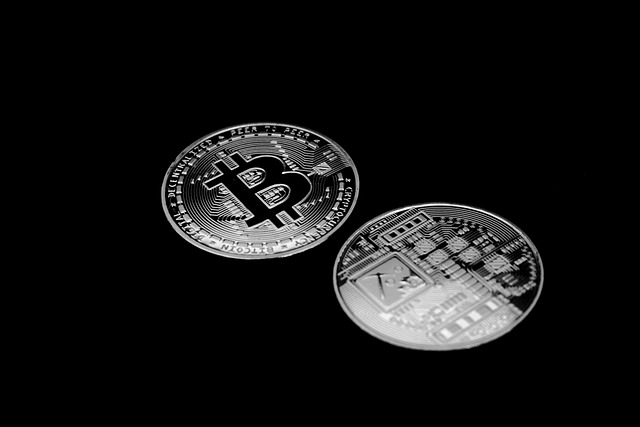Altcoin Season Meaning Explained 2025
Author: Jameson Richman Expert
Published On: 2025-10-26
Prepared by Jameson Richman and our team of experts with over a decade of experience in cryptocurrency and digital asset analysis. Learn more about us.
Altcoin season meaning refers to a market phase when alternative cryptocurrencies (altcoins) significantly outperform Bitcoin, attracting disproportionate capital, higher trading volume, and rapid price appreciation across many non-Bitcoin tokens. This article explains the concept in plain terms, shows how to identify and time altcoin seasons using on-chain and market indicators, reviews historical examples, offers practical trading and portfolio strategies, and points to tools and resources (including trusted trading platforms and automation) to help traders and investors prepare for the next altseason in 2025.

What is an Altcoin Season?
An altcoin season — often shortened to “altseason” — is a crypto market cycle segment when altcoins (any cryptocurrency other than Bitcoin) exhibit stronger performance than Bitcoin over a sustained period. Instead of Bitcoin capturing most new capital inflows, money flows into smaller- and mid-cap tokens across DeFi, infrastructure, memecoins, gaming, and niche sectors. Altseason is characterized by higher correlation among altcoins, exploding market caps, and fast-moving speculative trades.
For a concise definition and background on altcoins, see the Wikipedia entry on Altcoin.
Why Altcoin Seasons Happen: Key Drivers
- Bitcoin dominance shifts: A drop in Bitcoin dominance (the proportion of total crypto market capitalization that Bitcoin represents) often signals rotation into altcoins.
- Risk-on investor sentiment: When macro risk appetite rises, traders move from the perceived safety of Bitcoin into riskier, higher-return altcoins.
- Liquidity and leverage: Lower liquidity in altcoin markets allows smaller capital inflows to have outsized price effects, fueling rallies.
- Product and narrative cycles: New narratives (e.g., AI-related tokens, L2 scaling solutions, gaming and NFTs) attract speculative capital rapidly.
- Technical and social triggers: Breakouts, whale accumulation, positive community sentiment, and influencer-driven flows can amplify moves.
Core Metrics and Indicators to Identify Altcoin Season
Multiple quantitative and qualitative indicators can help detect or confirm an altseason. Use several signals together rather than relying on a single metric.
1. Bitcoin Dominance (BTC.D)
Bitcoin dominance is the most commonly referenced indicator. A sustained decline in BTC.D suggests capital is rotating into altcoins. Track BTC.D charts on platforms like CoinMarketCap or CoinGecko.
2. Altcoin Market Cap vs. Bitcoin
Look at the altcoin market cap (total crypto market cap minus Bitcoin). Rapid increases show broad-based altcoin participation. Many traders monitor the altcoin-to-Bitcoin market cap ratio for confirmation.
3. Volume and Liquidity Shifts
Rising trading volumes on decentralized exchanges (DEXs) and centralized altcoin markets indicate active rotation. Track DEX metrics and exchange volume reports to verify real capital movement.
4. Breadth of Winners
Altseason usually involves many tokens rising simultaneously, not just one outlier. Measure breadth with metrics like the proportion of altcoins in green over 24 hours or the number of tokens making new highs.
5. On-Chain Signals
- Active addresses and transaction counts on altcoin networks
- Token inflows to exchanges (can indicate selling pressure) vs outflows (accumulation)
- Whale wallet accumulation tracked on-chain
6. Social and Sentiment Indicators
Elevated social media mentions, Reddit and Twitter sentiment, and trend spikes often precede or accompany altseason. Tools that aggregate sentiment can be useful; consider cross-referencing Reddit/Discord chatter with on-chain flow data to avoid false signals.

Historical Examples of Altcoin Seasons
Reviewing historical altseasons helps build expectations and rules for entry, exit, and risk management.
2017: ICO Boom and Meme Money
The 2017 bull market saw hundreds of ICOs and new altcoins surge. Many projects appreciated massively before the 2018 crash. Lessons: early speculative gains can be brutal in reversals; fundamentals matter for long-term survivors.
2020–2021: DeFi Summer and NFT Mania
DeFi protocols (Uniswap, Aave, Compound) and yield farming created powerful narratives. NFTs and layer-2 scaling solutions later added fresh capital. This altseason showed how product-led narratives (utility, TVL) can sustain rallies longer than meme-driven speculation.
2023–2024: Recovery Rotation
After BTC-led recoveries, periods of altcoin strength returned as traders sought higher returns, demonstrating that altseason can repeat across cycles when risk-on sentiment revives.
How Long Does an Altcoin Season Last?
There is no fixed duration. Some altseasons last weeks, others months. Duration depends on macro liquidity, narrative strength, and regulatory developments. Use trailing indicators (profitability, leverage levels, market concentration) to judge maturity rather than counting days.
Trading and Investment Strategies During Altcoin Seasons
Altseason offers opportunity but also heightened risk. Below are practical, actionable strategies for different risk profiles.
1. Allocation and Diversification
- Conservative: Keep a core holding in Bitcoin and allocate a smaller portion (5–15%) to high-quality altcoins (blue-chip projects like Ethereum, Layer 2s).
- Moderate: 20–40% altcoin exposure across mid-caps and blue-chips, with strict position sizing.
- Aggressive: Higher allocation to small caps and new narratives, but limit each position to a small % of capital to manage blow-ups.
2. Momentum Trading
Use momentum indicators (RSI, MACD, moving averages) and breakout patterns. Confirm with volume spikes and cross-market validation (DEX + CEX volume). Quick profit targets and tight stop-losses are essential due to volatility.
3. Swing Trading and Sector Rotation
Rotate between sectors (DeFi → L2 → Gaming → Meme) as narratives evolve. Use sector ETFs or baskets where available, or create diversified baskets using limit orders to manage entry prices.
4. Dollar-Cost Averaging (DCA)
For longer-term investors, DCA into selected altcoins reduces timing risk while participating in growth. Combine DCA with periodic rebalancing to lock profits.
5. Use of Leverage
Leverage amplifies gains and losses. Prefer low or no leverage during early phases; sophisticated traders may use measured leverage only after confirming sustained momentum.
6. On-Chain and Fundamental Research
Evaluate tokenomics, developer activity, GitHub updates, TVL for DeFi projects, and real use cases. Projects with real adoption are likelier to survive post-altseason retracements.

Risk Management: Protecting Capital in Fast-Moving Markets
- Position sizing: Limit any single altcoin to a small percentage of total capital (1–5% for speculative picks).
- Stop-loss strategies: Use volatility-adjusted stops (ATR-based) rather than fixed percentages to avoid being stopped out by noise.
- Profit-taking rules: Scale out on large rallies and rebalance periodically.
- Secure custody: Use hardware wallets for long-term holdings and reputable exchanges for active trading. Always enable multi-factor authentication.
- Tax and compliance: Understand tax rules for crypto trading in your jurisdiction and maintain records of trades.
Signals, Tools, and Automation to Monitor Altseason
Efficient monitoring and automation can provide an edge. Consider these categories of tools:
Market Data and Charting
- Real-time charts and custom alerts on TradingView
- Market breadth tools and custom screener setups
- CoinMarketCap, CoinGecko for cap and liquidity snapshots
On-Chain Analytics
Platforms like Glassnode, Nansen, and Dune Analytics provide wallet-level insights, token flows, and whale activity. These help confirm whether retail hype is backed by real accumulation.
Trading Bots and Algorithmic Tools
During altseasons, speed and discipline matter. Trading robots can automate strategies, rebalance portfolios, and capture arbitrage. For an up-to-date list of vetted automation tools, see this resource on the top trading robots for 2025.
Competitions and Practice
Paper trading and participating in competitions are low-cost ways to build skill. Bitget and other exchanges often run contests that simulate rapid altcoin environments — learn tactics here: how to master Bitget trading competitions.
Where to Buy Altcoins: Recommended Platforms
Choose reputable exchanges with strong liquidity, security, and a wide token listing. Below are commonly used options with registration links:
- Register on Binance — large selection, high liquidity.
- Open a MEXC account — broad altcoin listings and competitive fees.
- Sign up on Bitget — good for derivatives and competitions.
- Create a Bybit account — strong derivatives and margin functionality.
Before choosing, compare fees, withdrawal limits, KYC policies, supported fiat options, and security track records. For U.S. residents, ensure compliance with local regulations.

Narrative Risk: When Stories Drive Prices
Altcoin seasons are often narrative-driven. While narratives (e.g., AI tokens, L2 scaling, gaming/metaverse) can sustain inflows, they can also evaporate quickly. Validate narratives by checking real usage metrics: active users, TVL, partnerships, developer activity, and on-chain transactions.
For long-term perspective and sentiment context, reading community and forecasting discussions can help. Consider sentiment and scenario analysis pieces such as this discussion on long-term Bitcoin scenarios, which also sheds light on broader market psychology: Bitcoin 2030 realistic scenarios and sentiment.
Practical Checklist to Prepare for Altcoin Season
- Set goals: Are you trading for short-term gains or investing for long-term exposure?
- Establish position sizing and maximum portfolio allocation to altcoins.
- Create watchlists for sectors you believe will lead (DeFi, L2, gaming).
- Set alerts on BTC dominance and altcoin market cap ratio.
- Prepare exchange accounts (Binance, MEXC, Bitget, Bybit) and withdraw limits where necessary: register links above.
- Backtest momentum or breakout strategies on historical altseason periods.
- Plan stop-loss and profit-taking rules; stick to them.
- Secure long-term holdings in hardware wallets; use reputable custodial services for active trading.
Tax, Regulation, and Safety Considerations
Regulation is a major factor that can end or reshape altseasons. Policy announcements, exchange enforcement, or token-specific legal actions can dramatically impact prices. Keep regulatory risk on your checklist and maintain accurate trading records for tax reporting.
For general investor protection guidance, consult government and regulatory resources. The U.S. Securities and Exchange Commission provides investor alerts and tips for crypto investors (example resource): SEC - U.S. Securities and Exchange Commission. For educational coverage on alternative investments and risk, see Investopedia’s altcoin overview.

Common Altseason Mistakes and How to Avoid Them
- FOMO buying: Avoid entering at euphoric peaks; use scaled entries instead.
- Poor risk controls: High volatility demands strict size limits and stops.
- No exit plan: Set profit targets in advance and lock gains progressively.
- Ignoring fundamentals: Don’t assume every token will recover after a crash — many projects fail.
- Over-leveraging: In fast markets, leverage magnifies losses more than gains for most traders.
Using Automation and Bots During Altseason
Automation can enforce discipline and execute faster than manual trading. Typical uses include:
- Rebalancing portfolios to maintain target allocation
- Executing grid or dollar-cost strategies across volatile altcoins
- Arbitrage between exchanges when spreads widen
- Backtesting and executing breakout/momentum strategies
To research proven automation tools and choose robots vetted for 2025 environments, check this curated review of automated trading solutions: top trading robots for 2025. Always test in demo or paper-trading mode before deploying capital live.
How to Practice Without Risk: Competitions and Paper Trading
Competitions and paper trading allow you to test tactics in altseason-like volatility without real money. Exchanges frequently host simulated contests and tournaments where strategies are stress-tested. Learn how to engage and improve your performance in competitive settings here: master Bitget trading competition.

Altseason and Long-Term Investing: When to Hold vs. When to Trade
For long-term investors, altseasons can be a chance to acquire high-quality projects at scale. Distinguish between:
- Speculative plays: Short-term trades with tight risk controls.
- Core holdings: Projects with demonstrable adoption and robust tokenomics suitable for longer-term holding.
Use altseasons to rebalance the portfolio: take profits on speculative winners and redeploy into undervalued blue-chip projects or into cash equivalents for future opportunities.
Preparing for the Exit: Recognizing Altseason Maturity
Signals that an altseason is maturing or topping include:
- Extreme market concentration in a few tokens while most fail to participate
- Excessive leverage and margin usage on exchanges
- Declining breadth despite continued headline gains (fewer tokens making new highs)
- Pervasive media hype and unrealistic price targets
When you see several of these signs align, consider tightening stops, taking profits, and moving capital to safer positions until confirmation of sustainability.
Case Study: A Hypothetical 2025 Altseason Playbook
Scenario: Bitcoin consolidates after a new all-time high, BTC dominance drops 5% over six weeks, DeFi and L2 narratives pick up momentum.
- Week 1: Monitor BTC.D and altcoin market cap ratio. Start small DCA into high-quality alts (ETH, SOL, AVAX).
- Week 2–4: If volume and breadth expand, increase exposure to mid-cap DeFi and infrastructure tokens. Use limit orders and take partial profits on 20–50% rallies.
- Week 5–8: Add a small basket of speculative small-caps with strict position size rules (1% max each). Implement ATR-based stops.
- Exit: If BTC.D rebounds or leverage spikes and breadth narrows, scale out and redeploy profits to core BTC/ETH or stablecoins.

Resources and Further Reading
- Altcoin — Wikipedia
- Investopedia — Altcoins Overview
- CoinMarketCap — Market Data
- CoinGecko — Token Rankings
Final Thoughts and Practical Next Steps
Understanding altcoin season meaning is about recognizing market rotation, measuring breadth and capital flows, and matching strategy to risk tolerance. Whether you’re a trader aiming to capture short-term momentum or an investor seeking long-term exposure to promising ecosystems, the keys are research, disciplined risk management, and using the right tools.
If you want to prepare practically: open accounts on reputable exchanges using the links listed above, set up alerts on BTC dominance and altcoin market cap, backtest strategies in paper-mode, and consider vetted automation to execute disciplined entries and exits. For vetted automation vendors and trading robot options for 2025, see the curated list linked earlier: top trading robots for 2025.
Remember: nothing here is financial advice. Crypto markets are volatile and speculative. Always do your own research (DYOR) and consider consulting a licensed financial professional regarding your personal situation. For more on market sentiment and long-term scenarios that influence altseason dynamics, this community and sentiment analysis resource may be helpful: Bitcoin 2030 realistic scenarios and Reddit sentiment.
Good luck, trade responsibly, and plan your altseason playbook before the market speeds up.